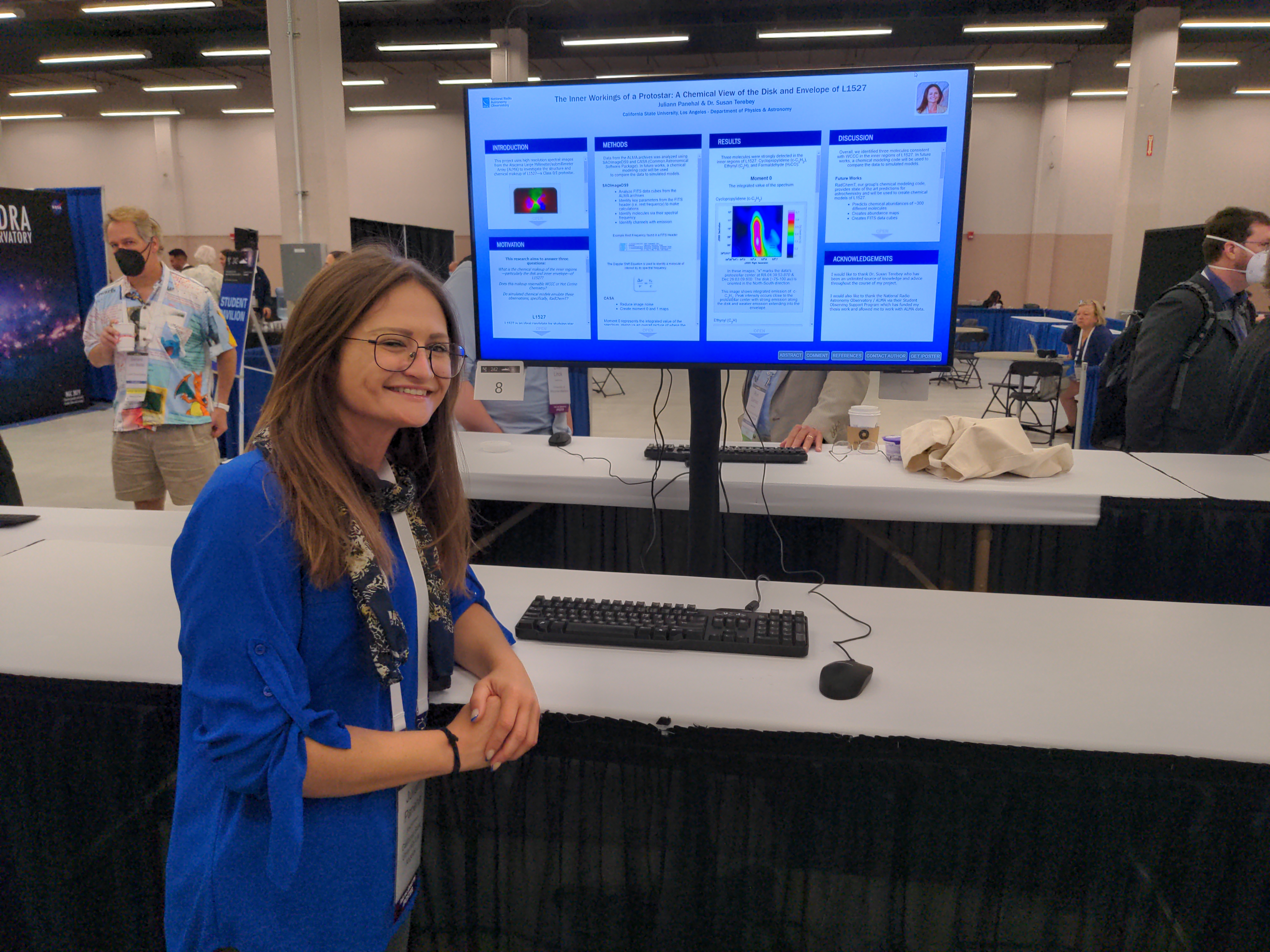When a star begins to form, the heat and pressure generated during the initial collapse of a protostar can be an excellent environment for chemical reactions. Young protostars can create a range of complex molecules, but the process can vary.
One process is known as the Hot Corino pathway, where the hot central region of the protostar is rich with complex organic molecules, and the warm region surrounding it has a low abundance of molecules such as methane. This would imply that organic molecules are mostly generated in the hot core. Another process is known as the Warm Carbon Chain Chemistry (WCCC) pathway, where the hot central region doesn’t have many organic molecules, while the warm envelope surrounding it is rich with methane. This would suggest active chemistry in the envelope.

Ethynyl seen in the disk surrounding L1527. Credit: Juliann Panehal
To better understand these pathways, Juliann Panehal, a graduate student in physics & astronomy at Calstate LA, studied a protostar known as L1527. She wanted to see whether its chemistry followed the Hot Corino or WCCC pathway. Using high-resolution spectral data from the Atacama Large Millimeter/submillimeter Array (ALMA), Juliann observed a strong presence of complex organic molecules including ethynyl and formaldehyde in the inner regions of the protostar. The disk of gas surrounding the star is rich with these molecules, which is consistent with the WCCC pathway.
These results help astronomers not just understand protostar formation, but also planet formation and their chemical composition.






